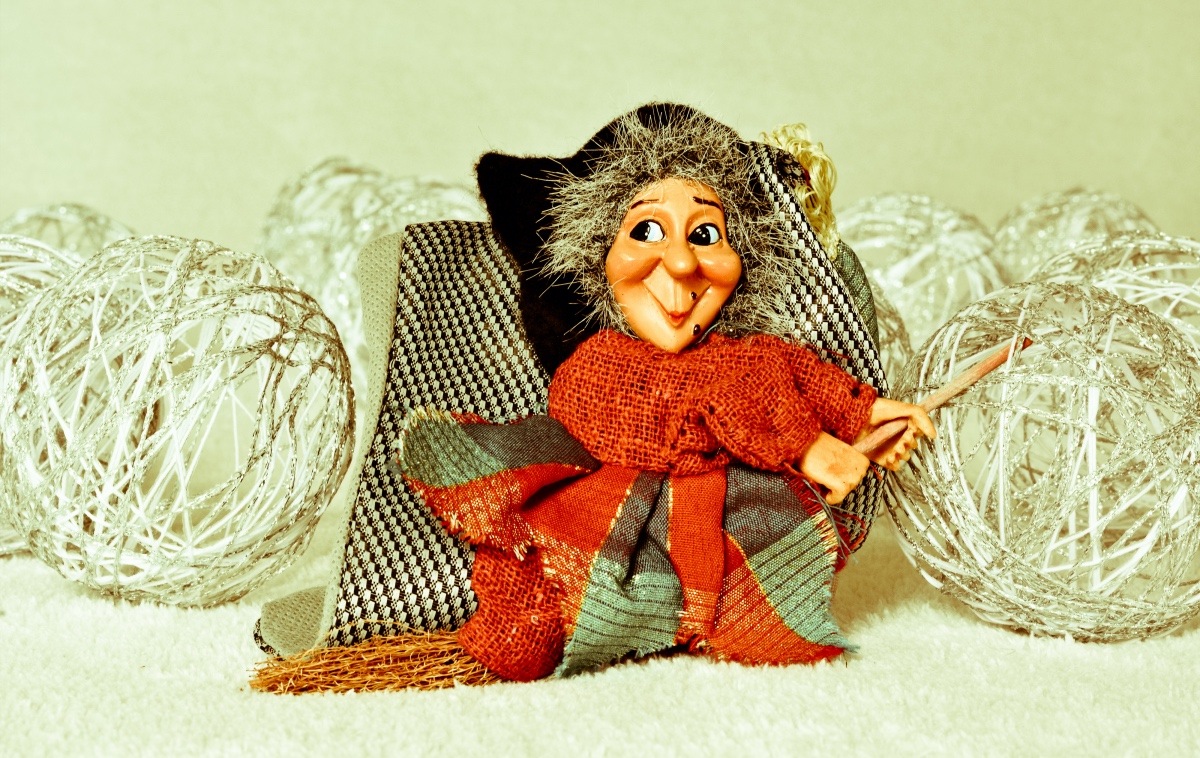
On January 5th throughout Italy, excited children prepare for a late-night visit from La Befana by hanging up socks to be filled with small delights. Befana, a grandmotherly woman who resembles a kindly witch, brings gifts to good little children, depositing them in stockings hung above the hearth, then tidying up a bit before taking her leave.
Befana arrives after children have gone to bed on the eve of the Festa dell’Epifania (Feast of Epiphany), which is a celebration of the visit of the Three Kings or Magi to the newborn Christ child in Bethlehem. It’s thought that her name derives from the word “Epifania.” Another theory posits that an important figure from Italian folklore is a Christian version of an earlier Roman goddess, Sabine (also known as “Strenia” and “Bastrina”).
While the ancient goddess connection is probably accurate, Befana has been transformed through the ages from her likely ancient Roman origins. The medieval figure conceived of in 13th century Rome is very similar to the grandmotherly Befana children adore today.
La Befana - The Good Witch of Christmas
Most modern representations of Befana — seen in storybooks and as popular dolls — depict her as an elderly woman wrapped in a dark shawl, wearing a kerchief on her head, and carrying or riding a broom. According to a popular song about Befana, she is dressed “in the Roman custom” (col vestito alla romana).
Befana is not the “bad witch”, who lures unwitting children like Hansel and Gretel into her cottage and then devours them. Most often, Befana is seen smiling while carrying a basket heaped with goodies. She’s affectionately known as “the Christmas witch”, due to her costume and association with Sabine, who was sometimes referred to as a good witch, and protector of children.
In fact, Befana is not technically a witch at all, although she has some obvious characteristics of fairytale witches. But inquisitive children (and adults) beware: if you’re intent on getting a glimpse of her, Befana is rumored to give you a sharp thump with her broom!
The legend of La Befana - An origin story as old as Christmas
There’s a specific tale with mostly subtle variations relating to Befana’s connection to the Three Kings of the Epiphany, which actually explains the broom.
According to the legend, Befana was in her cottage sweeping the floor when she glanced out of the window and saw a bright light in the night sky. She paused to behold it but then returned to her work as she was devoted to being a good housekeeper. Soon after the star appeared, she was paid a visit by the Three Kings, which, as you can imagine, took her quite by surprise! It seems they had wandered far from their path toward the humble stable in Bethlehem. They asked Befana for directions, told her they were following the star at the advice of royal astrologers and were intent on bringing gifts to honor the babe.
Befana declined their invitation to join them on their journey as she was too reluctant to leave her work unfinished. She did provide the kings with shelter for the night. After they set out the next day, she had a change of heart. She ran after them with her broom and her basket of small gifts for the holy child but failed to catch up with their entourage.
What does La Befana bring - Treats or coal for nice or naughty children
Italians say that Befana is still searching for that baby and, on her quest, she leaves treats such as toys and candy or fruit for well-behaved children. Naughty children get chunks of coal, onions, and garlic, or even a straw from her broom instead of rewards. Needless to say, parents don’t mind using La Befana as leverage with their children — at least during the few weeks leading up to Christmas and Epiphany!
As Befana enters houses through the chimney — or resorts to other top-secret techniques for getting into a home without a fireplace — she wears a distinctive dark shawl caked with layers of chimney soot. It’s also said that she sweeps the floor of a home before she departs, a symbolic gesture for clearing out the old just as the new year is dawning.
Where to Celebrate La Befana in Italy
Throughout Italy, children eagerly await the arrival of La Befana, and cities hold celebrations in her name. The biggest La Befana festival takes place in Urbania, her traditional home. Every year on January 5, residents of Urbania host an enormous celebration that attracts between 30,000 and 50,000 people. Activities include dancing and juggling, singing in the streets — and appearances by hundreds of Befanas, who begin their Epiphany gift-giving journeys by handing out sweets to children at the festival


